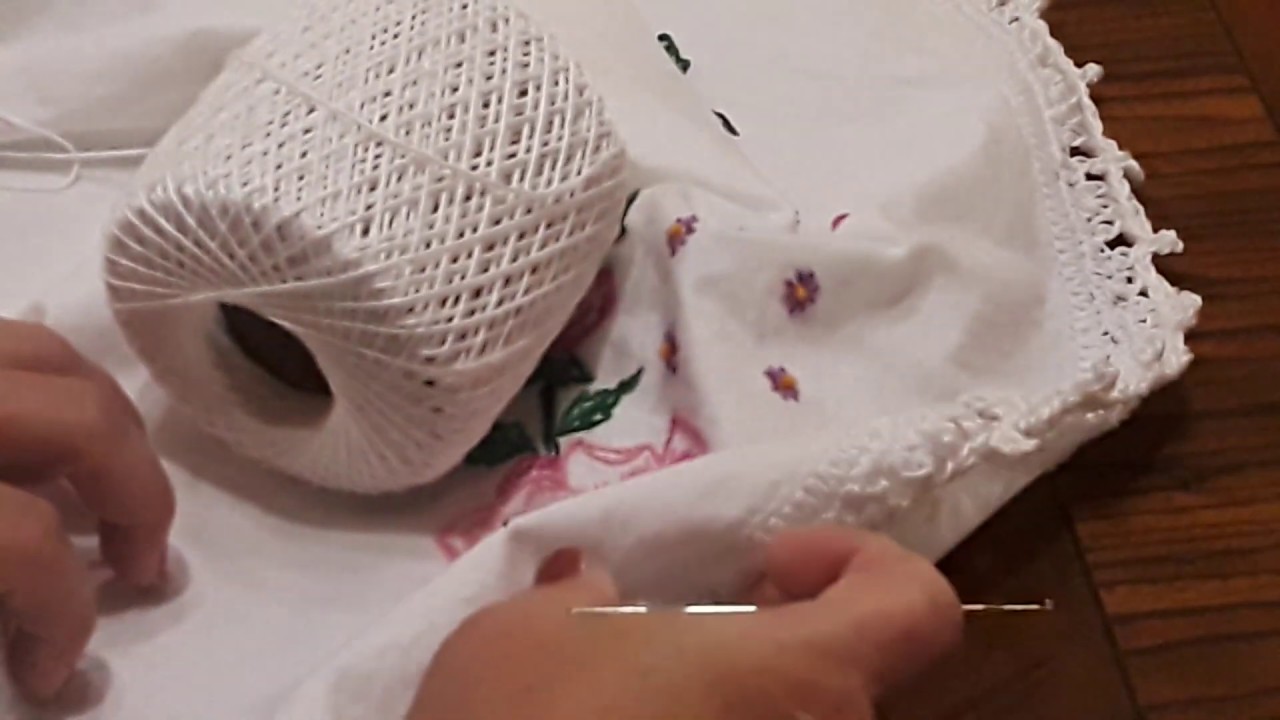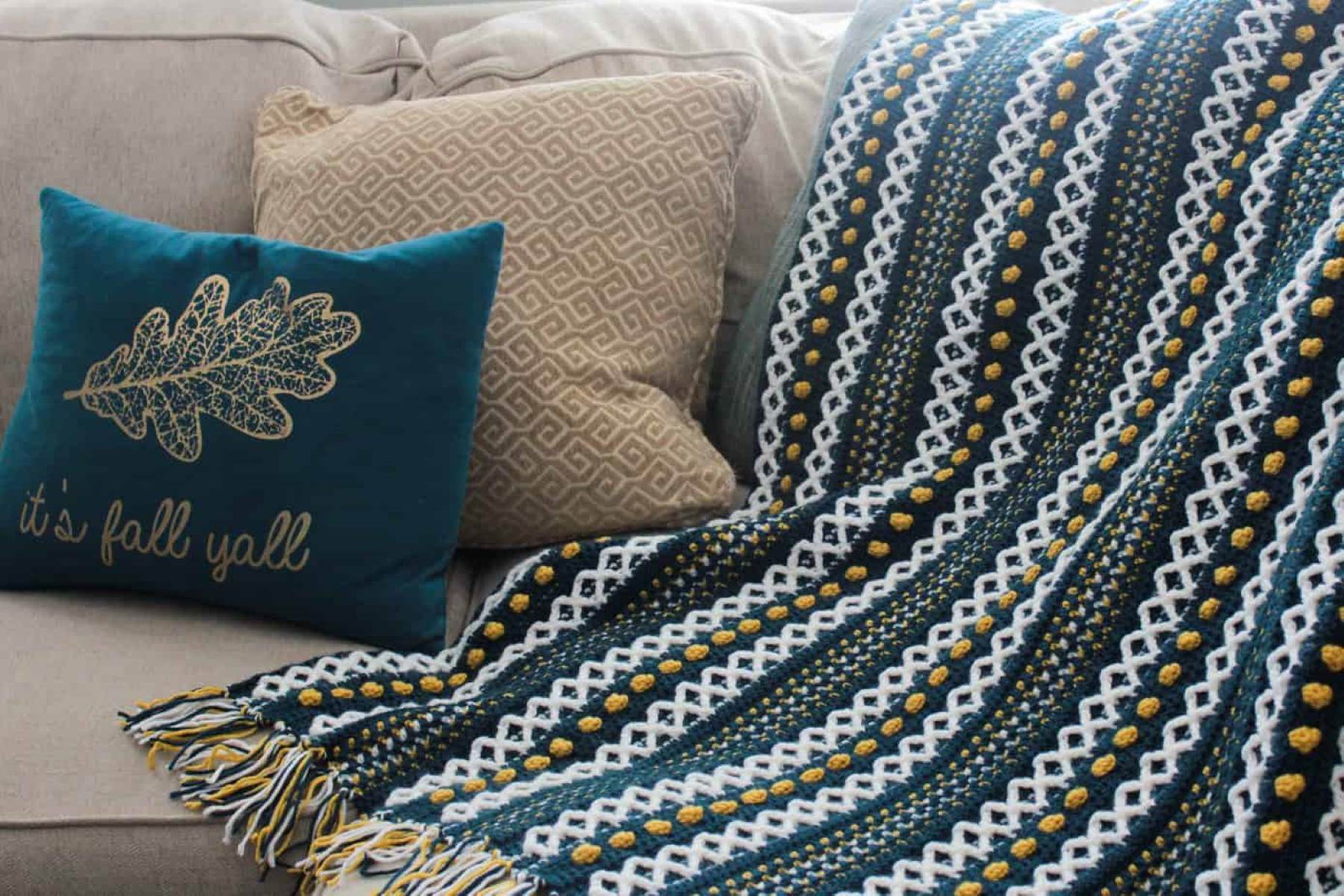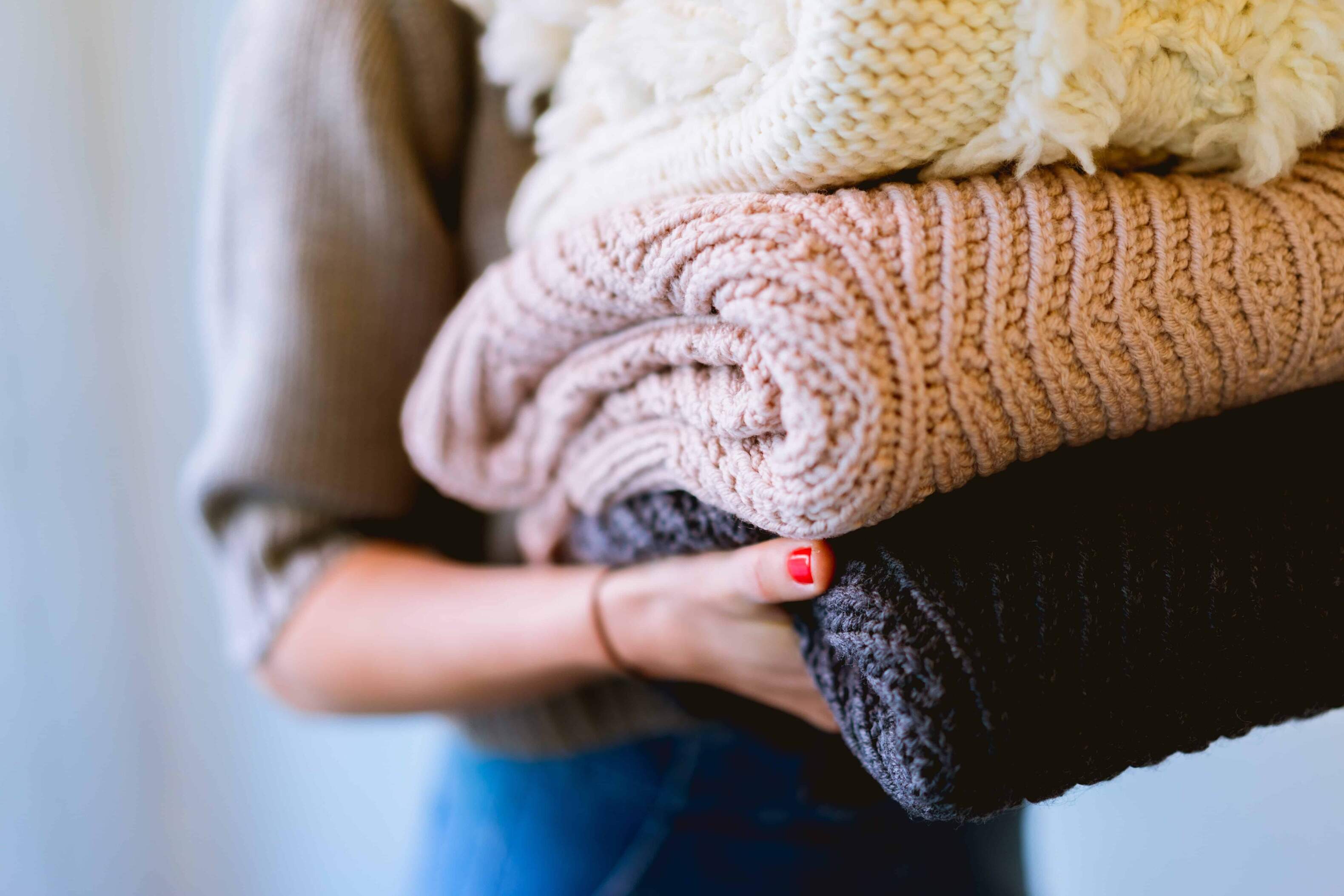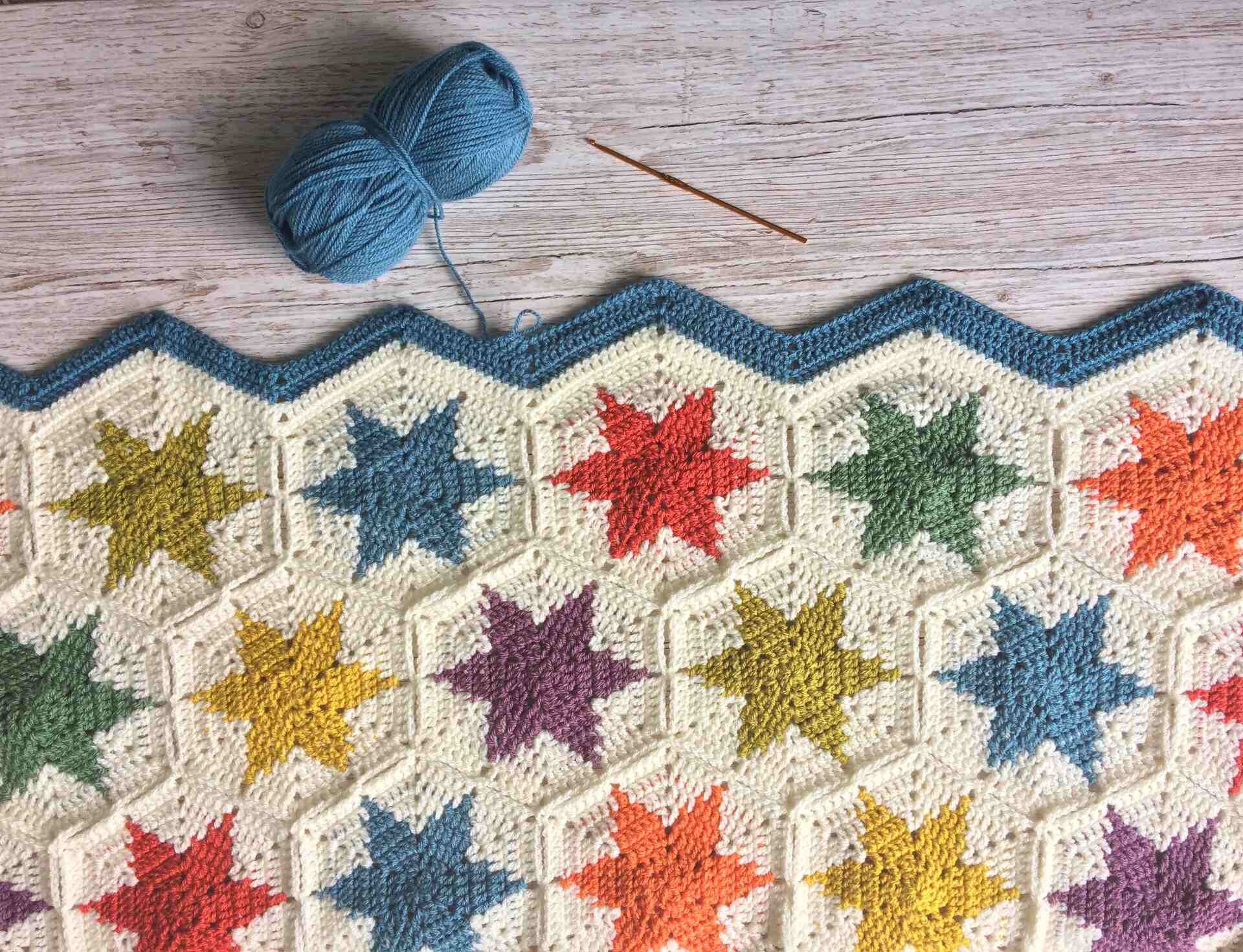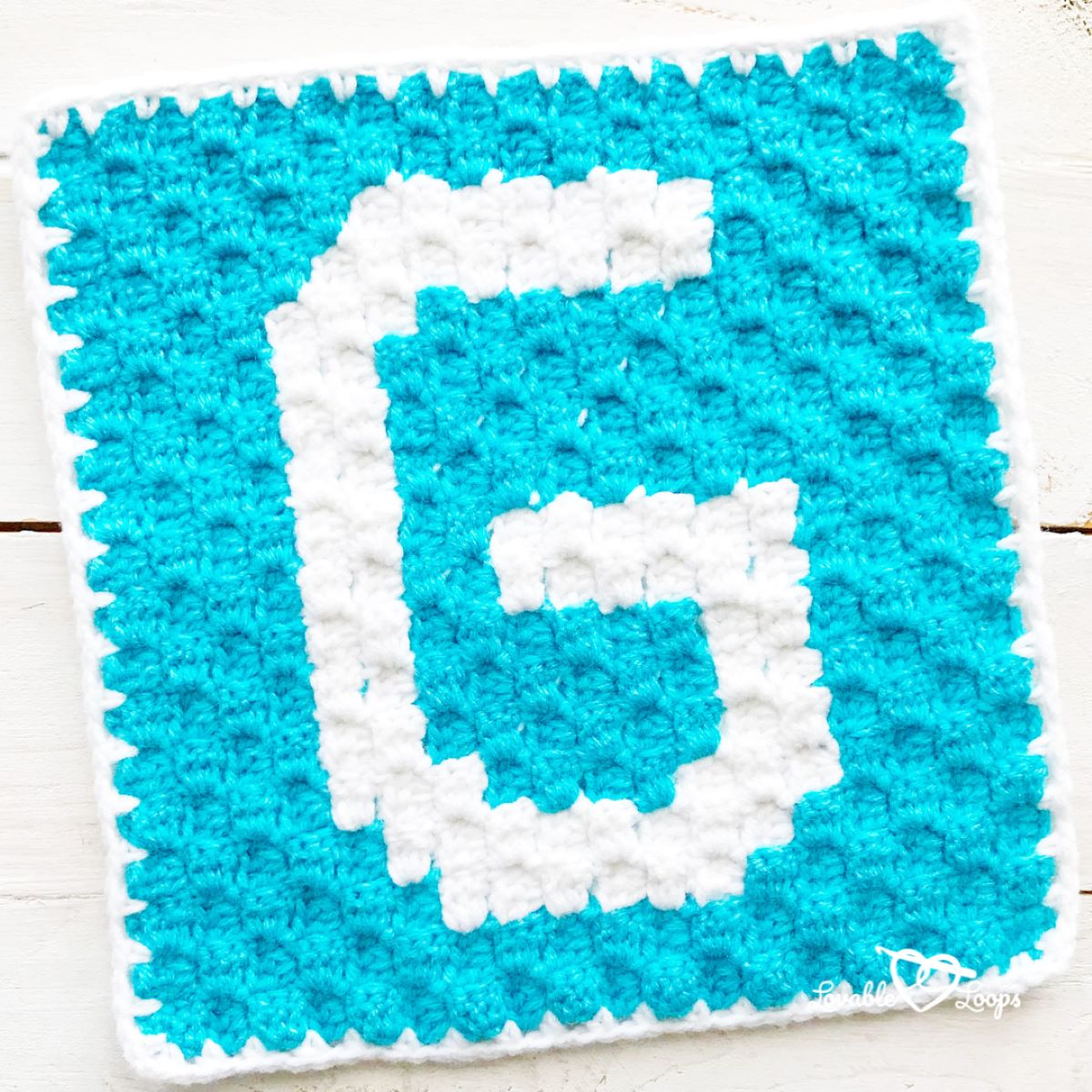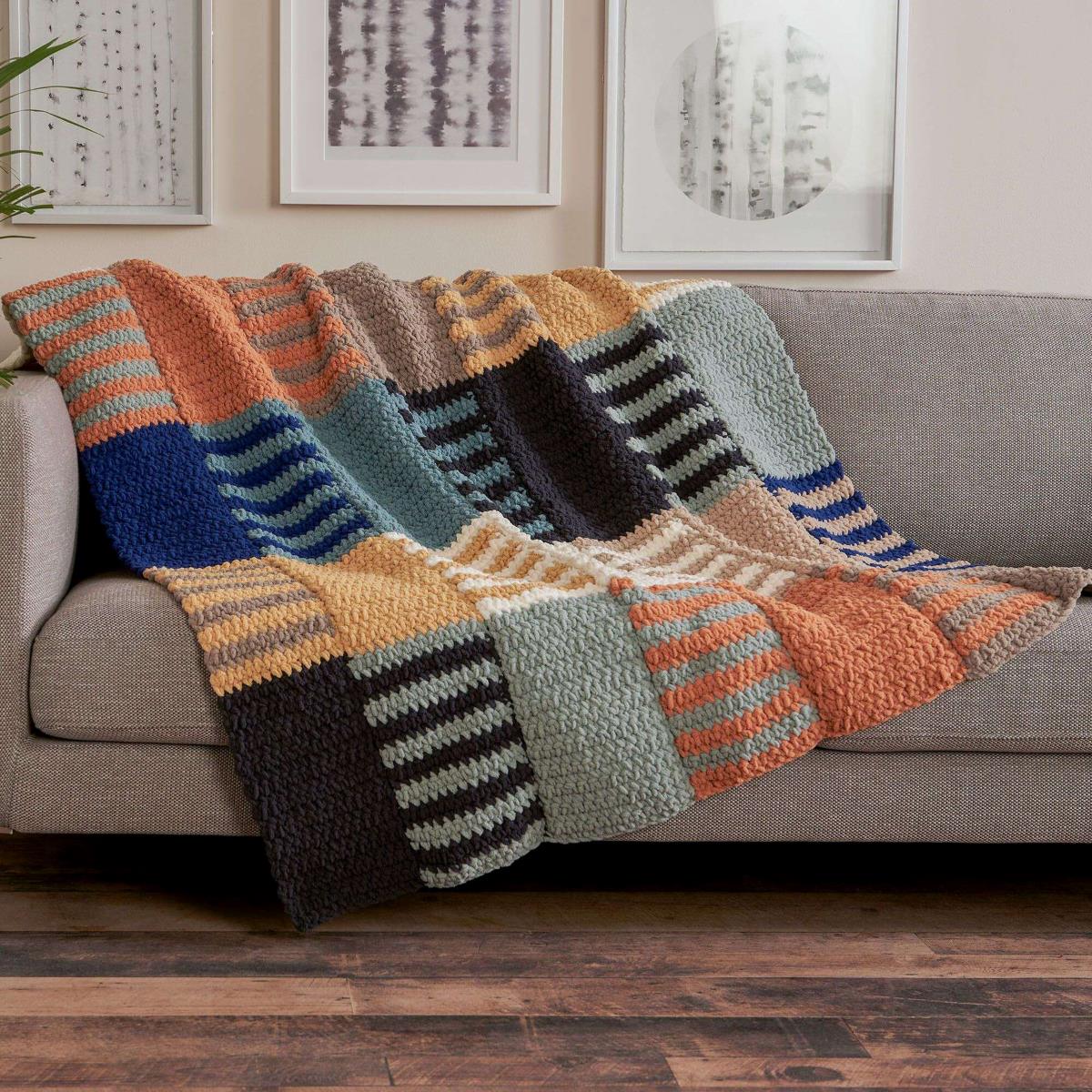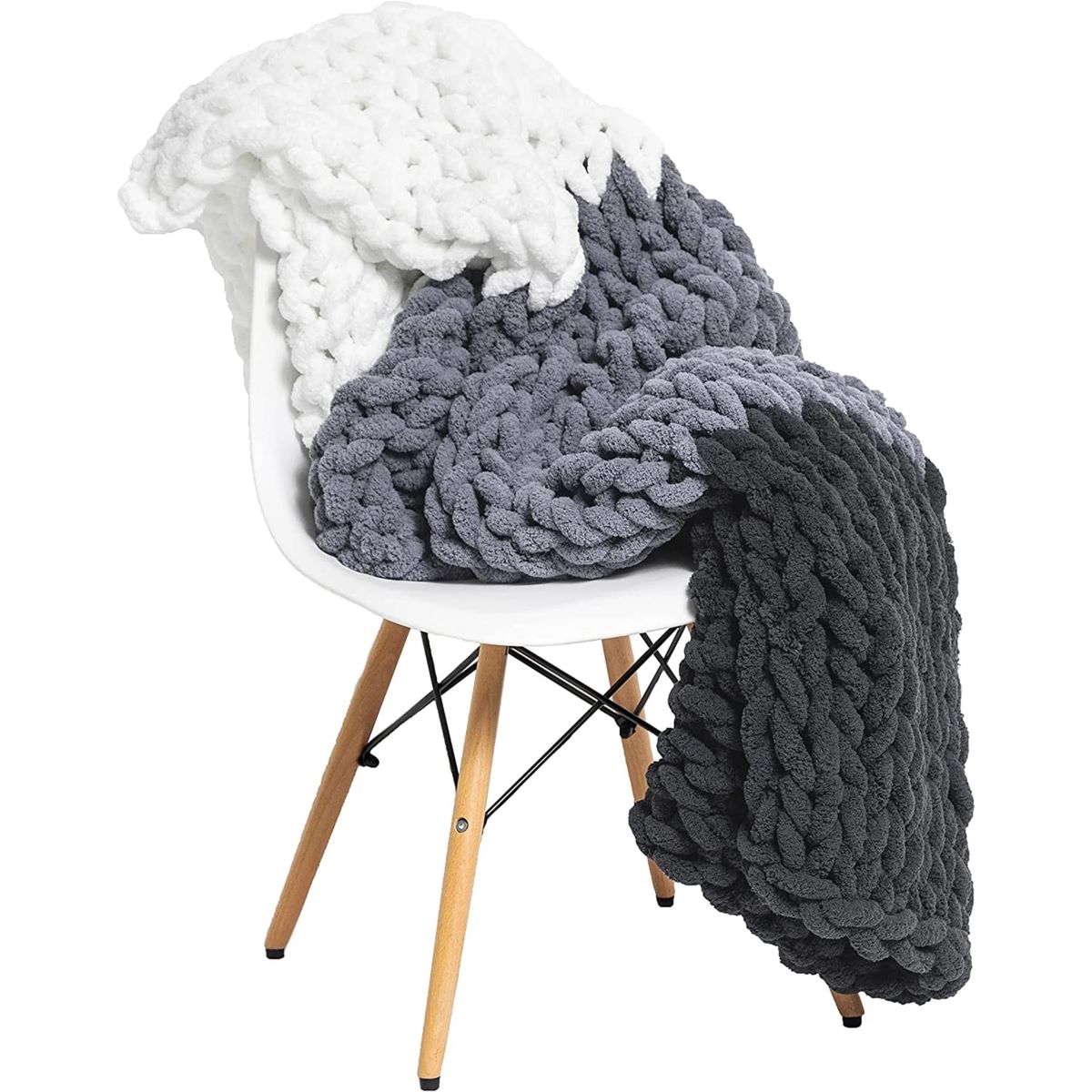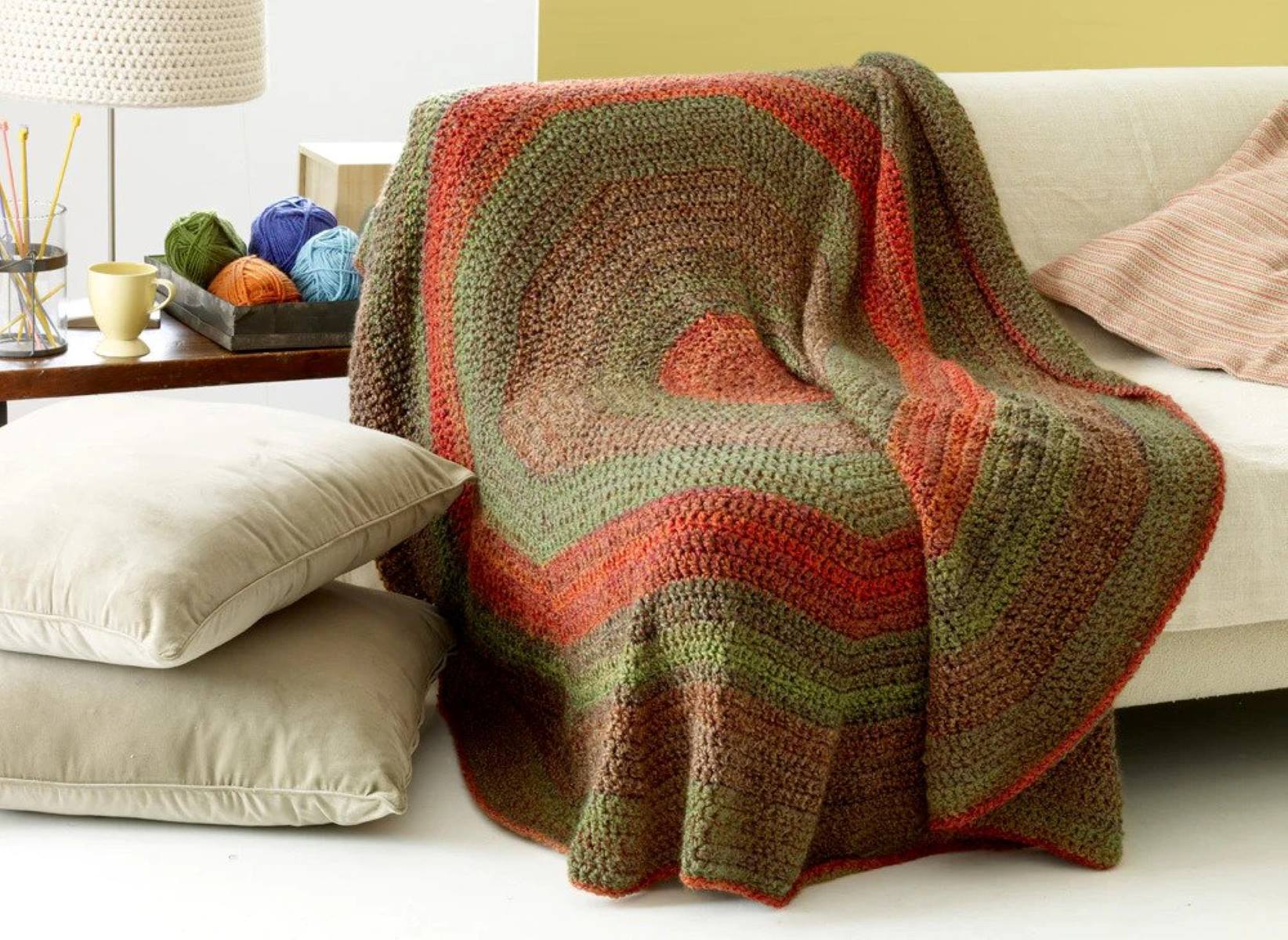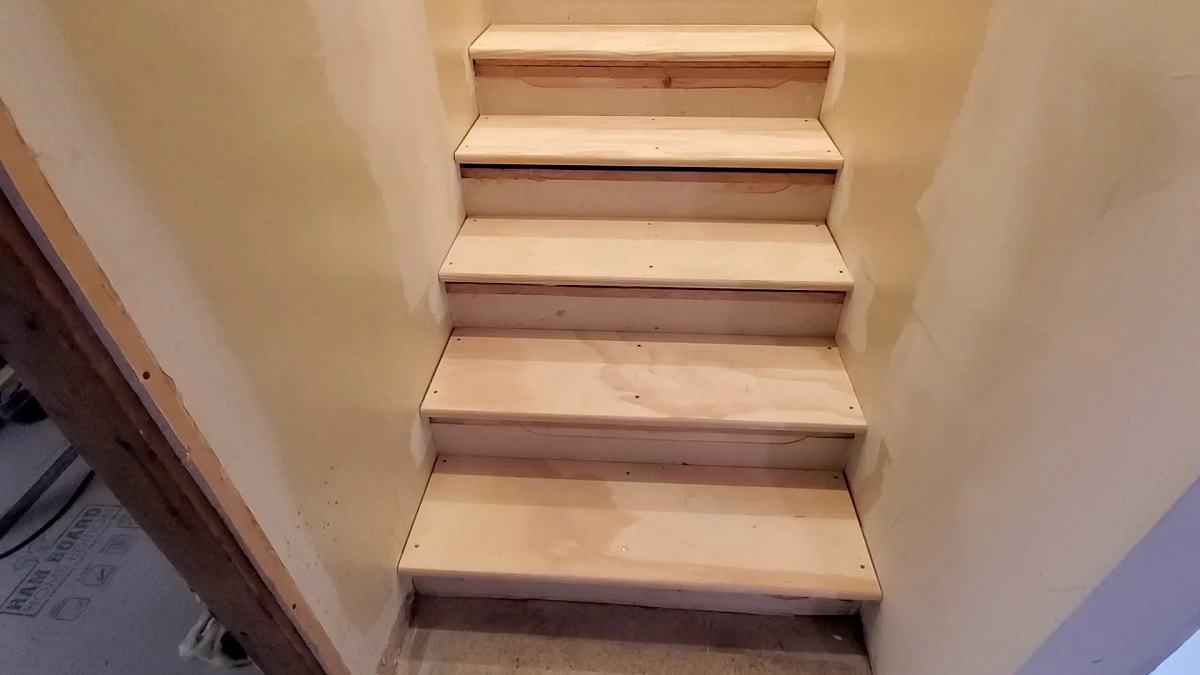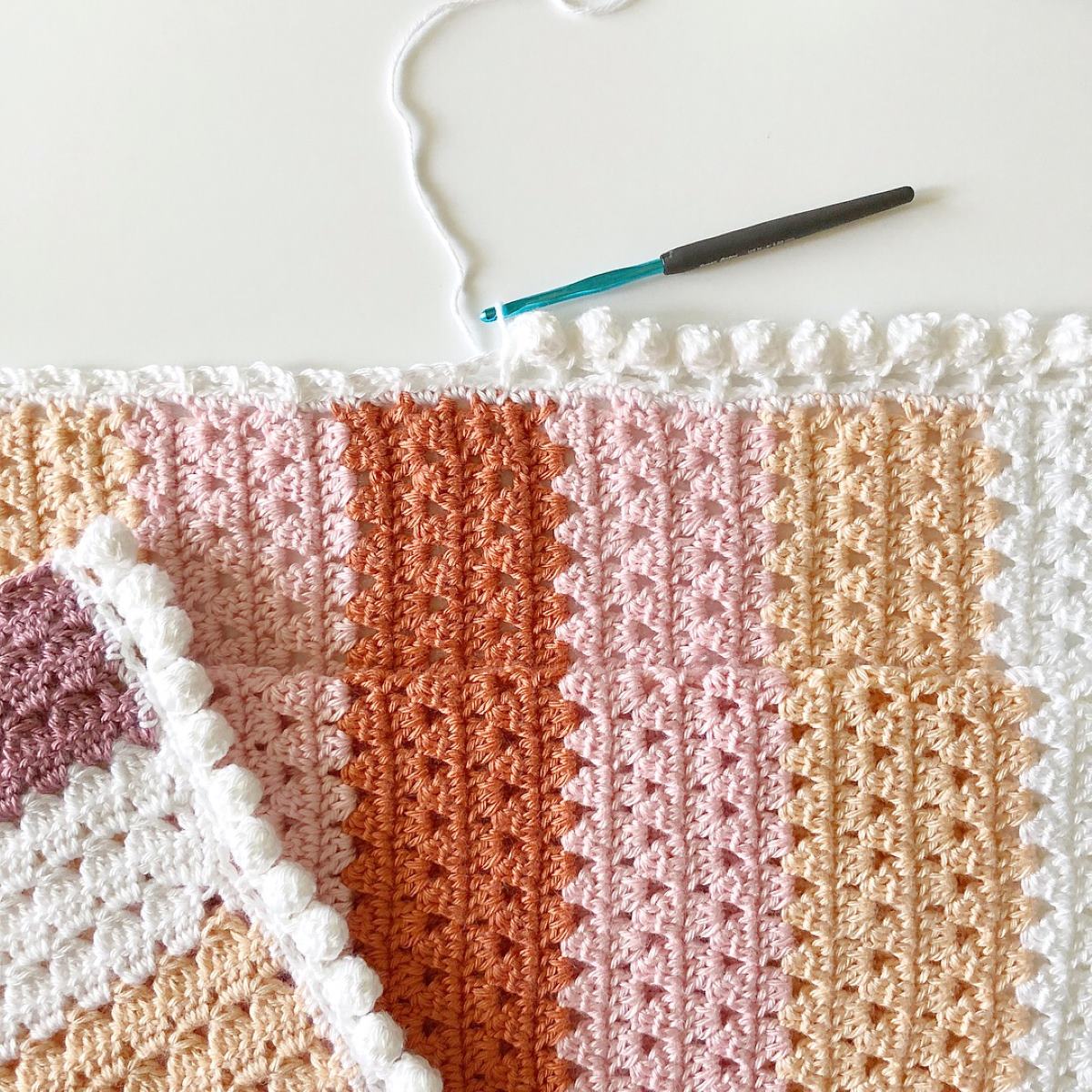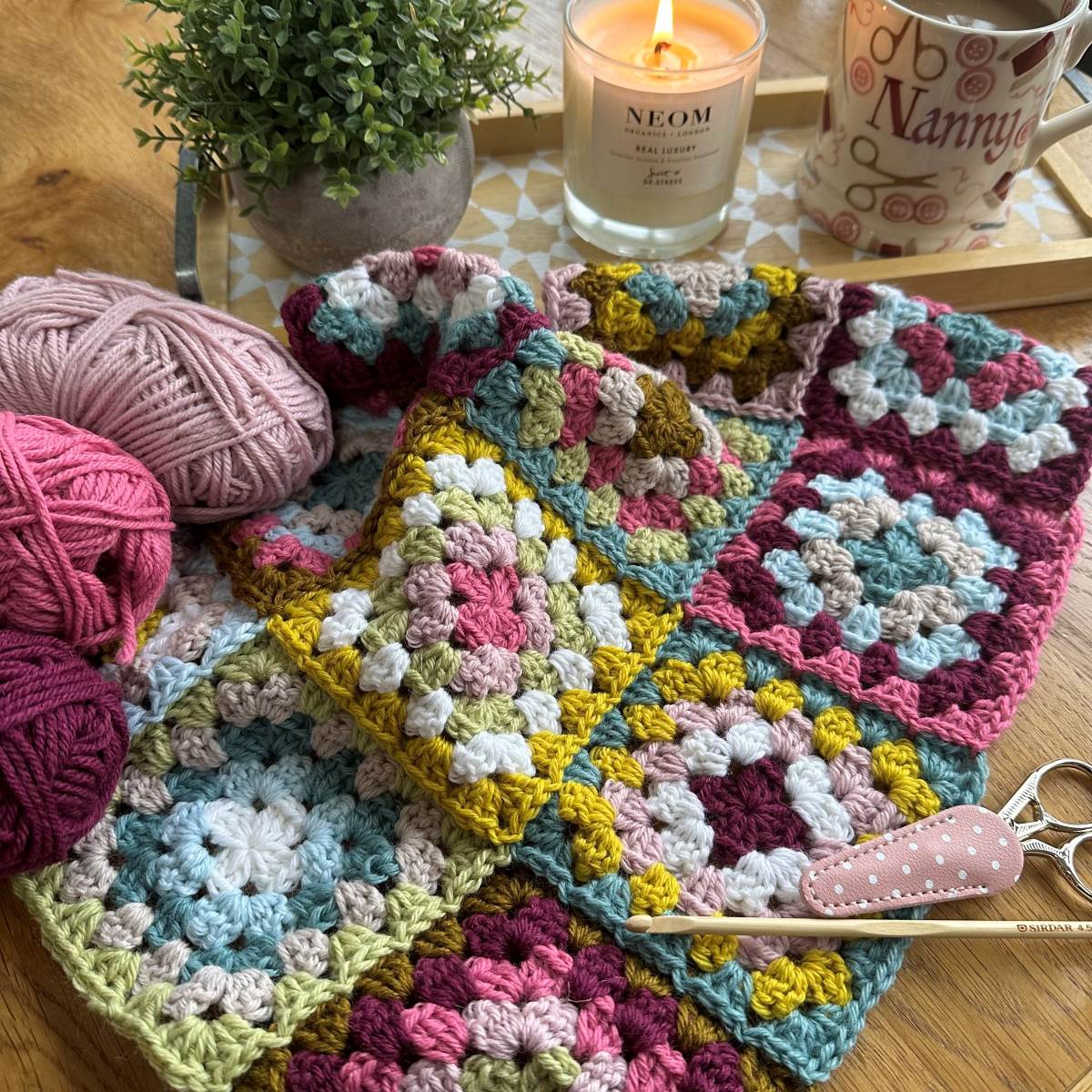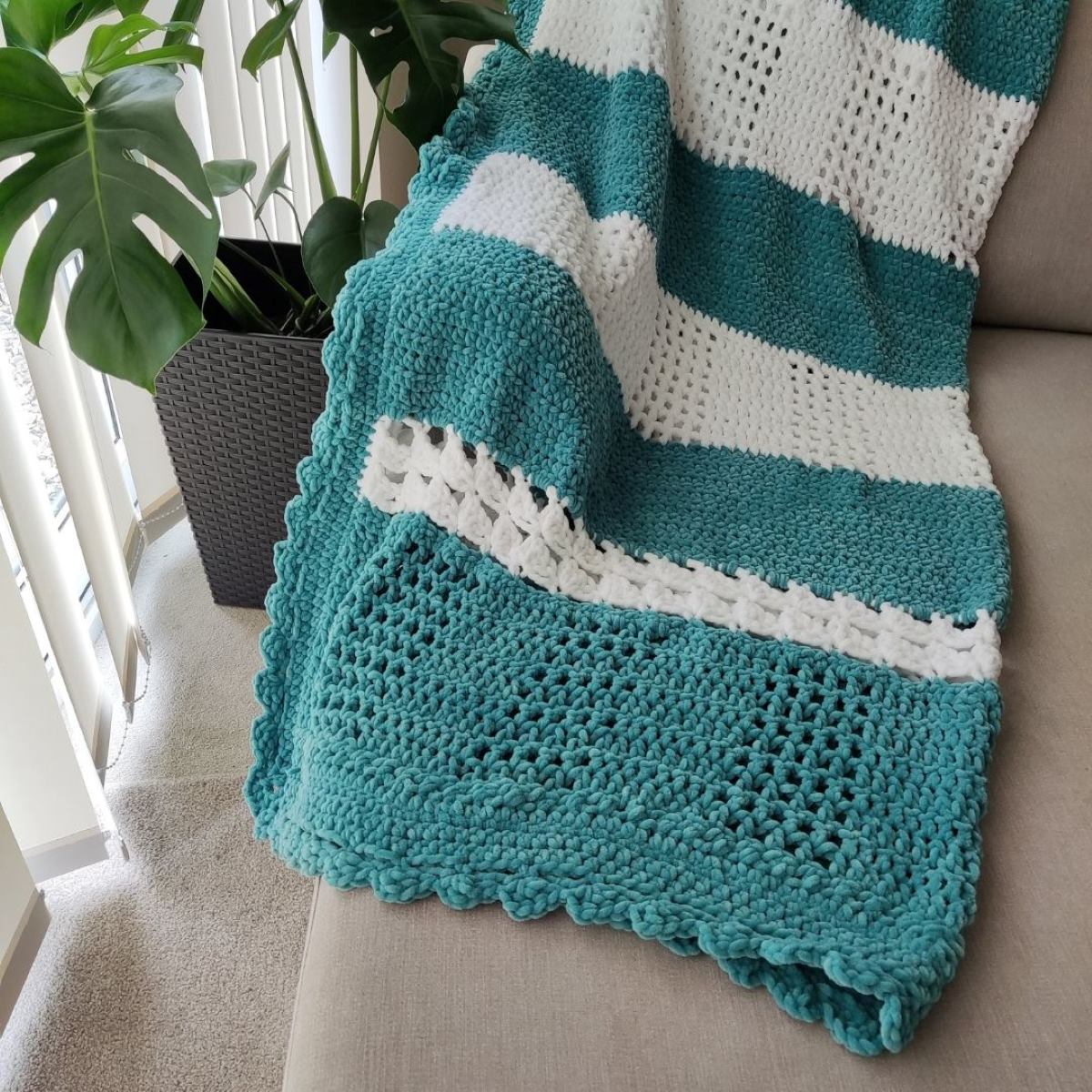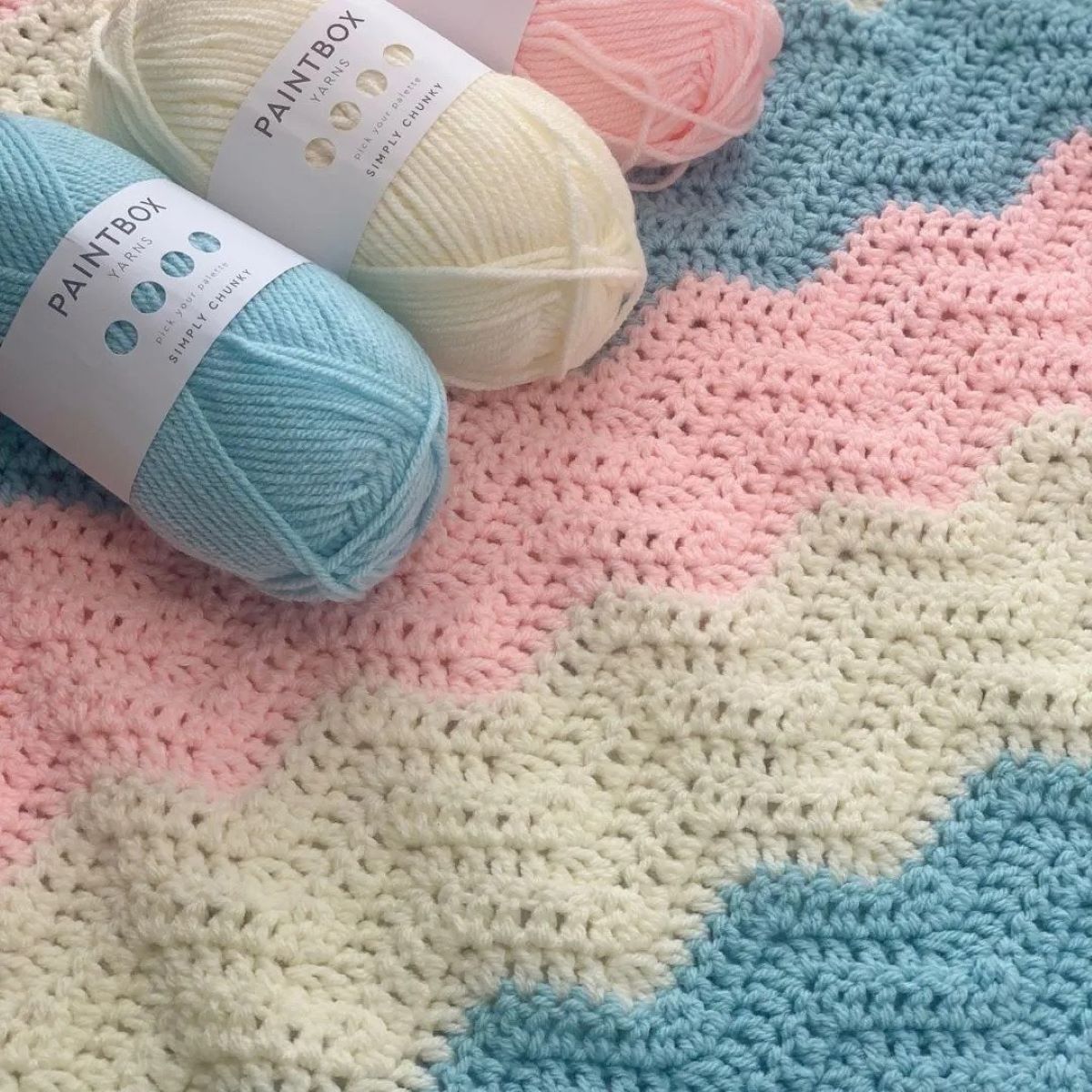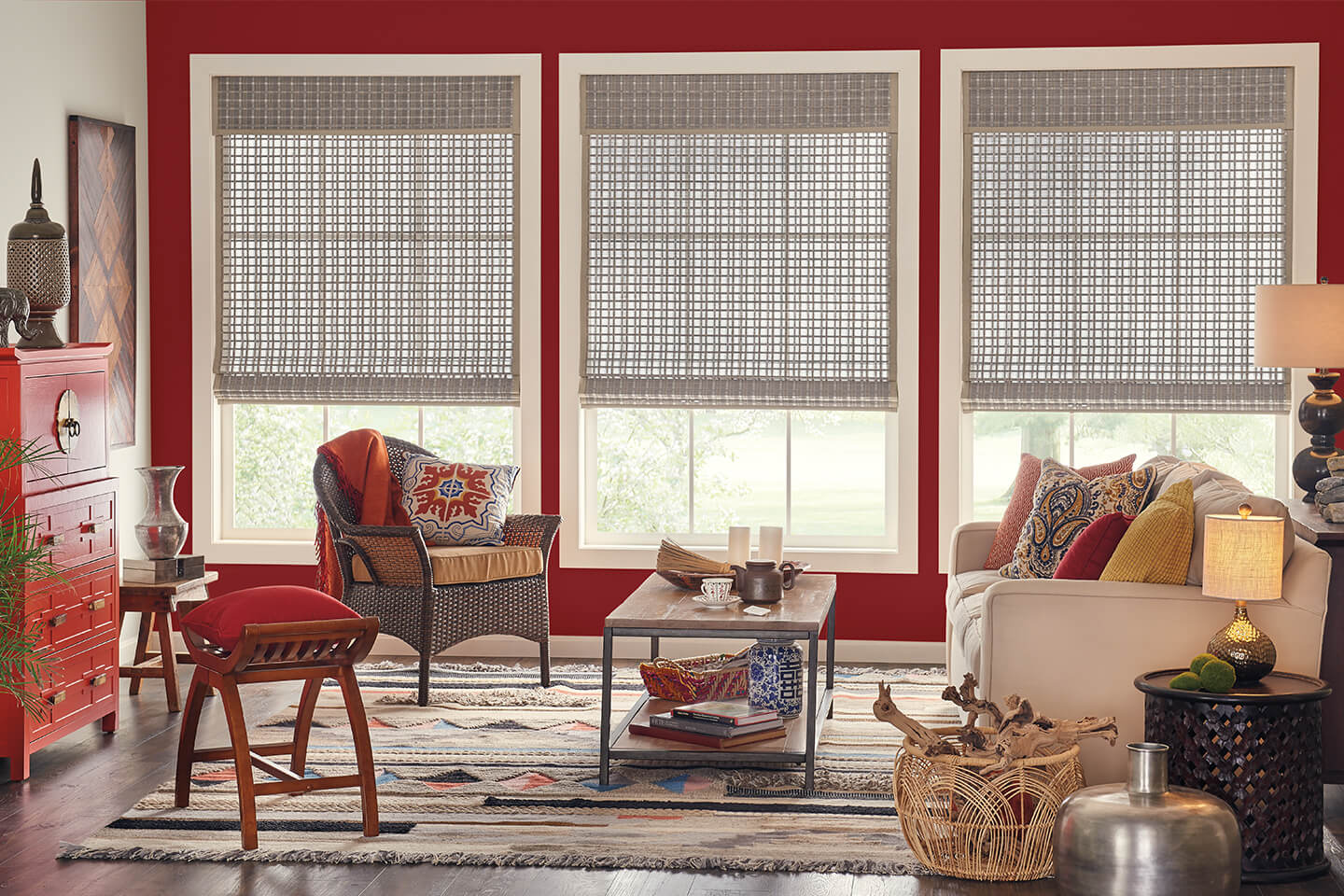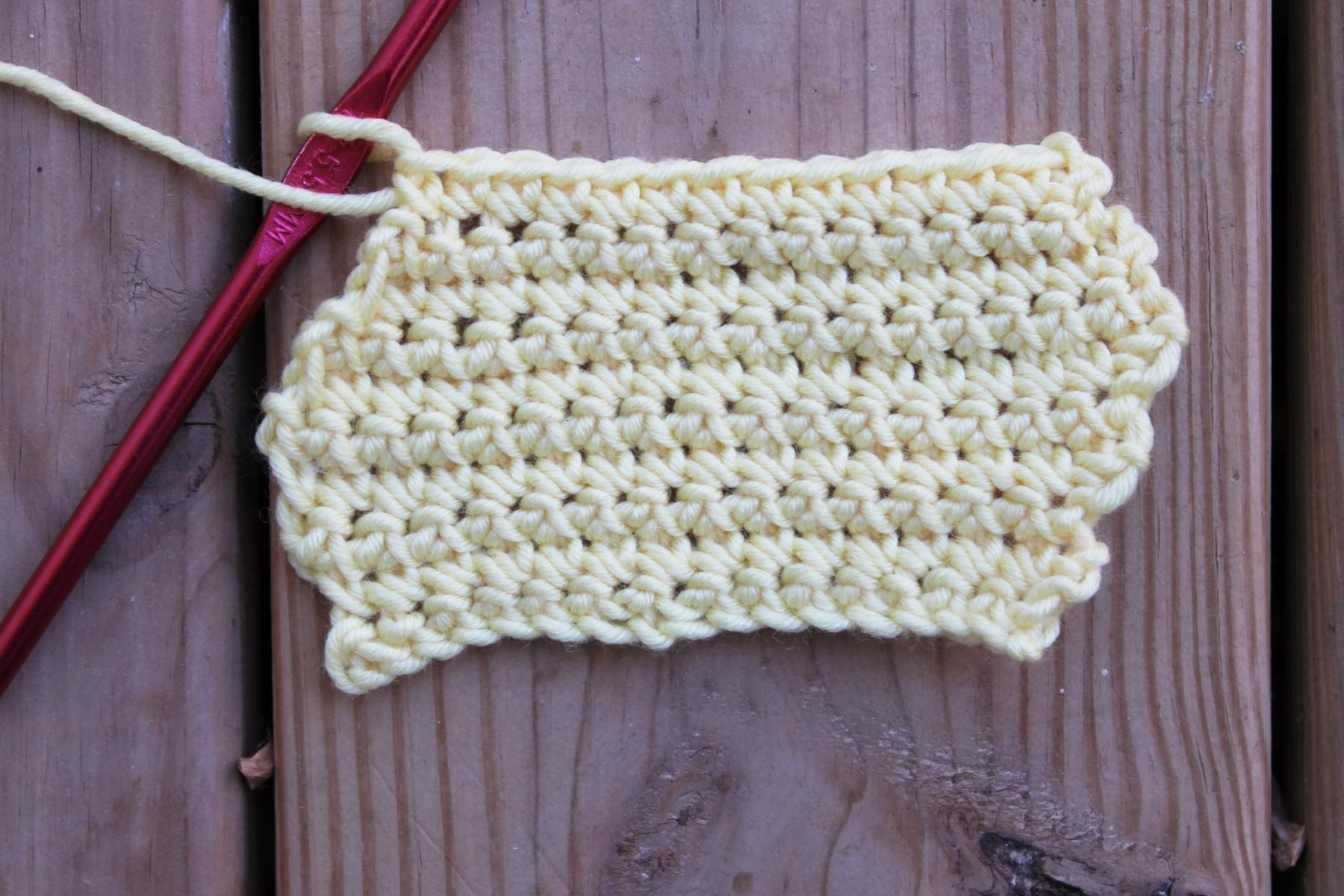

Articles
How To Fix Uneven Edges Of A Crochet Blanket
Modified: October 23, 2024
Learn how to fix uneven edges of a crochet blanket with our helpful articles. Improve the appearance of your project and achieve a polished finish.
(Many of the links in this article redirect to a specific reviewed product. Your purchase of these products through affiliate links helps to generate commission for Storables.com, at no extra cost. Learn more)
Introduction
Crocheting a blanket is a delightful and fulfilling endeavor. It allows you to create a cozy and beautiful piece that can be cherished for years to come. However, one challenge that many crocheters face is achieving perfectly even edges. Uneven edges can be frustrating, as they can detract from the overall aesthetic of the blanket. But fear not! In this article, we will explore several methods to help you fix uneven edges in crochet blankets.
Uneven edges in crochet blankets can occur due to various factors. One common cause is inconsistent tension while crocheting. When the tension is too tight or too loose, it can lead to uneven stitches and edges. Another factor could be the use of different yarn weights or hook sizes throughout the project, resulting in uneven stitch patterns and sizes. Additionally, the natural difference in stitch height between different crochet stitches can contribute to uneven edges.
To tackle uneven edges, you will need a few tools and materials. Firstly, you will need the crochet blanket that has uneven edges. It’s also helpful to have a blocking mat or surface, blocking pins, and a spray bottle filled with water. If you decide to add a border to your blanket, you’ll need extra yarn in a coordinating color and a hook that matches the recommended hook size for your chosen yarn. Lastly, having multiple crochet hooks in different sizes can be beneficial for adjusting tension or changing hook size.
Key Takeaways:
- Transform uneven edges into polished perfection with blocking, adding a border, adjusting tension, or changing hook size. Embrace creativity and patience to conquer crochet blanket challenges.
- Master the art of fixing uneven edges in crochet blankets by combining techniques and tools. Embrace the journey of creativity and expertise to create stunning, professional-looking blankets.
What causes uneven edges in crochet blankets?
Uneven edges in crochet blankets can be attributed to a variety of factors. Understanding these causes can help you identify the root of the problem and implement the most appropriate solution. Here are some common culprits:
- Inconsistent tension: Tension refers to the tightness or looseness with which you hold the yarn while crocheting. If your tension varies throughout the project, it can result in uneven stitches and edges. Consistency is key, so practicing maintaining a steady tension will greatly improve the overall appearance of your crochet blanket.
- Changing yarn weights or hook sizes: Using different weights of yarn or hook sizes within the same blanket can lead to uneven stitch patterns and sizes, thus affecting the edges. It’s essential to match the yarn weight and hook size recommended for the pattern you’re following to maintain consistency.
- Difference in stitch heights: Different crochet stitches have varying heights. For instance, double crochet stitches are taller than single crochet stitches. When transitioning between these stitches, the disparity in height can create uneven edges. Being mindful of this difference and making necessary adjustments can help achieve a more uniform edge.
- Not counting stitches accurately: Mistakes happen, and sometimes we unintentionally skip or add stitches while crocheting. Failing to count stitches accurately can throw off the symmetry of the blanket, resulting in uneven edges. Double-checking your stitch count at the beginning and end of each row can help catch any errors early on.
- Lack of blocking: Blocking is a technique that involves wetting and shaping the crochet piece to even out the stitches and edges. It can be particularly useful for blankets with lace or intricate stitch patterns. Not blocking a blanket can contribute to uneven edges and an overall irregular appearance.
Identifying the specific cause of your uneven edges will guide you towards the most effective method of fixing them. Whether it’s adjusting your tension, changing hook sizes, or adding a border, addressing the underlying issue will result in a more polished and professional-looking crochet blanket.
Tools and materials needed
When it comes to fixing uneven edges in crochet blankets, having the right tools and materials is essential. Here’s a list of what you’ll need:
- Crochet blanket with uneven edges: This is the starting point for the project. Make sure you have the blanket that needs fixing, whether it’s a work-in-progress or a completed piece.
- Blocking mat or surface: Blocking is a technique that helps reshape the crochet piece by stretching and pinning it into place. A blocking mat or surface provides a stable and flat area to work on.
- Blocking pins: These are used to secure the crochet blanket to the blocking mat or surface. They hold the edges and shape of the blanket in place while it dries.
- Spray bottle filled with water: Moistening the crochet blanket is a crucial step in the blocking process. A spray bottle allows you to evenly distribute water across the fabric without saturating it.
- Extra yarn and crochet hook (for adding a border): If you choose to add a border to your blanket, you’ll need extra yarn in a coordinating color and a crochet hook that matches the recommended hook size for your chosen yarn. The border will help even out the edges and give your blanket a finished look.
- Multiple crochet hooks (in different sizes): Adjusting tension or changing hook size can be effective methods for fixing uneven edges. Having multiple crochet hooks in various sizes gives you the flexibility to experiment and find the right hook size for achieving uniform stitches and edges.
With these tools and materials in hand, you’ll be well-equipped to tackle the task of fixing the uneven edges of your crochet blanket. Whether you choose to block the blanket, add a border, adjust tension, or change hook size, each strategy requires careful attention to detail and the right tools to achieve the desired result.
Method 1: Blocking the blanket
Blocking is a technique that can help fix uneven edges in crochet blankets. It involves wetting the fabric and reshaping it to achieve a more even and polished look. Here’s how you can block your blanket:
- Prepare your blocking materials: Lay your crochet blanket on a clean and flat surface, such as a blocking mat or towel. Secure it in place with blocking pins, ensuring that the edges are stretched to the desired shape.
- Moisten the blanket: Fill a spray bottle with water and lightly mist the entire blanket. Make sure to distribute the water evenly, but be careful not to soak the fabric. The moisture will help relax the fibers and make the blanket more pliable for shaping.
- Shape the blanket: Gently adjust the edges of the blanket, shaping them to be straight and even. Use your hands to smooth out any wrinkles or uneven areas. If necessary, you can pull gently on the fabric to stretch it and align the stitches.
- Let the blanket dry: Allow the blanket to dry completely while still pinned in place. This process may take a few hours to a day, depending on the yarn and humidity levels. Avoid removing the pins until the blanket is fully dry to maintain the shape and prevent it from reverting to its original uneven state.
- Unpin and assess: Once the blanket is dry, carefully remove the blocking pins. Take a step back and assess the edges to see if they have improved. The blocking process should have helped even out the stitches and edges, resulting in a more uniform look.
Blocking can be particularly effective for blankets with lace or intricate stitch patterns, as it enhances the definition and symmetry of the design. However, it’s important to note that blocking may not completely solve the issue for blankets with significant tension or stitch variations. In such cases, combining blocking with other methods, such as adding a border or adjusting tension, may yield better results.
Remember, blocking is a temporary alteration of the fabric’s shape, and the blanket may relax over time with use. If you find that the edges become uneven again after blocking, you can repeat the process as needed to maintain the desired appearance.
To fix uneven edges of a crochet blanket, try adding a border of single crochet stitches around the entire blanket. This can help even out the edges and give the blanket a more polished look.
Method 2: Adding a border
Another effective method for fixing uneven edges in crochet blankets is by adding a border. A border can not only enhance the overall appearance of your blanket but also help even out any irregularities along the edges. Here’s how you can add a border to your crochet blanket:
- Select a coordinating yarn: Choose a yarn color that complements your crochet blanket and works well with the existing color scheme. You can opt for a solid color or experiment with variegated or contrasting shades to create a visual impact.
- Choose an appropriate crochet hook: Select a crochet hook size that matches the recommended hook size for your chosen yarn. This ensures that the tension and stitch size of the border align with the rest of the blanket.
- Determine the border design: Decide on the type of border you want to add to your blanket. It can be as simple as a single crochet or double crochet stitch worked evenly along the edges, or you can choose a more intricate stitch pattern to create a decorative border.
- Start at a corner: Begin working the border at one corner of the blanket. Insert your crochet hook into a stitch along the edge, yarn over, and pull up a loop to begin the first stitch of the border.
- Continue along the edge: Work your chosen border stitch evenly along the entire edge of the blanket. Count the stitches to ensure that you have the same number on each side. This helps maintain symmetry and evenness.
- Join at the end: Once you reach the corner where you started, join the last stitch of the border to the first stitch with a slip stitch. This completes the border round and creates a seamless transition.
- Weave in ends: After finishing the border, weave in any loose yarn ends carefully to secure them and give your blanket a neat and polished look.
Adding a border not only helps conceal uneven edges but also adds a finished touch to your crochet blanket. It provides a cohesive frame and can enhance the overall design. You can get creative with different stitch patterns or incorporate additional elements, such as picot edging or shell stitch borders, to customize the look to your liking.
Remember to maintain consistent tension while working the border to ensure a uniform appearance. If you encounter any areas of unevenness, you can adjust your stitches accordingly, adding or skipping stitches as needed to align the edges properly.
By adding a border, you can transform your crochet blanket and turn uneven edges into a beautifully finished work of art.
Read more: How To Start Crocheting A Blanket
Method 3: Adjusting tension while crocheting
One of the root causes of uneven edges in crochet blankets is inconsistent tension. Luckily, adjusting your tension while crocheting can help you achieve more even stitches and edges. Here’s how you can make adjustments to your tension:
- Understand tension: Tension refers to the tightness or looseness with which you hold the yarn while crocheting. Finding the right tension is crucial for creating even and uniform stitches. Experiment with different levels of tension to see what feels comfortable for you.
- Practice consistency: Consistency is key when it comes to tension. Try to maintain a consistent level of tension throughout your crochet project. Pay attention to the pressure applied by your fingers and the yarn as you work each stitch.
- Relax your grip: If you tend to crochet with a tight grip, consciously try to relax your hand and fingers. Holding the yarn too tightly can lead to tighter stitches and tighter edges, contributing to unevenness.
- Loosen your tension: If you find that your stitches and edges are consistently too tight, intentionally loosen your tension. This can be done by holding the yarn more loosely or allowing it to glide smoothly between your fingers as you work.
- Tighten your tension: Conversely, if your stitches and edges are consistently too loose, you may need to tighten your tension. Hold the yarn slightly firmer or adjust the way you control the yarn with your fingers to achieve a tighter tension.
- Practice swatching: Swatching is a helpful technique for testing your tension before starting a larger project. Create a small sample using the same yarn and hook size you plan to use for your blanket. If the swatch has uneven edges, you can experiment with different tension adjustments until you achieve a more even result.
By practicing and adjusting your tension while crocheting, you can significantly improve the evenness of your stitches and edges. Remember that finding the right tension for your comfort level may take some time and practice, so be patient with yourself as you explore different techniques.
Additionally, it’s important to note that tension adjustments may not entirely fix more significant issues with uneven edges caused by other factors, such as changes in yarn weight or stitch height differences. In such cases, combining tension adjustments with other methods like blocking or adding a border may yield better results.
With practice and mindfulness, you can develop a consistent tension that creates beautifully even edges in your crochet blankets.
Method 4: Changing hook size
If you’re struggling with uneven edges in your crochet blanket, changing the hook size you’re using can make a significant difference. Here’s how you can use this method to fix uneven edges:
- Assess your current hook size: Take a look at the hook size you’re currently using for your crochet project. If you’re experiencing uneven edges, it could indicate that the hook size is not suitable for the yarn you’re working with.
- Consider the yarn weight: Determine the weight of the yarn you’re using. Typically, yarn labels indicate the recommended hook size for that particular yarn weight. Using the recommended hook size can help you achieve more even stitches and edges.
- Go up or down a hook size: If your stitches and edges are too tight and causing unevenness, try switching to a larger hook size. This will allow for looser tension and create more space between stitches. Conversely, if your stitches are too loose, you can try switching to a smaller hook size to tighten the tension and achieve more even edges.
- Make a swatch: Create a small swatch using the new hook size to test the effect on your stitches and edges. Evaluate the swatch for any improvements in terms of evenness and adjustability.
- Monitor your tension: Changing the hook size may require you to make some adjustments in your tension as well. Be mindful of how tight or loose you’re holding the yarn, and try to maintain consistent tension as you work with the new hook size.
- Continue with the new hook size: Once you’re satisfied with the results of the swatch, continue working on your crochet blanket with the new hook size. Pay attention to the edges and monitor for improvements in evenness.
Changing the hook size can significantly impact the appearance of your stitches and edges. It allows you to achieve a better balance between the yarn and the hook, resulting in more consistent and even stitching.
Remember, different yarns and stitch patterns may require different hook sizes. It’s important to consider the specific characteristics of the yarn you’re using and refer to the recommended hook size to guide your choice. Additionally, combining hook size adjustments with other methods, such as blocking or adding a border, can maximize your chances of achieving perfectly even edges.
With a willingness to experiment and make adjustments, changing the hook size can be an effective solution for fixing uneven edges in your crochet blanket.
Conclusion
Crocheting a blanket is a labor of love, and achieving perfectly even edges is worth the effort. Uneven edges can detract from the overall beauty of a crochet blanket, but they can be fixed. By implementing the methods discussed in this article, you can transform your uneven edges into a polished and professional-looking finished piece.
We explored several effective methods for fixing uneven edges in crochet blankets. Blocking the blanket can help reshape the fabric and even out the stitches, while adding a border can provide a finished look and contribute to symmetry. Adjusting tension while crocheting allows you to create more uniform stitches and edges, and changing the hook size can also make a significant difference in achieving evenness.
It’s important to remember that every crochet project is unique, and different methods may be more suitable depending on the specific circumstances. Combining techniques or experimenting with variations can lead to the best results. Additionally, practice and patience are essential as you develop your skills in achieving consistent tension and executing the methods.
Throughout the process, pay attention to details, count stitches accurately, and maintain a consistent tension to ensure the best outcome. Don’t be afraid to make adjustments or try different approaches to find the solution that works for you and your crochet blanket.
By utilizing these methods and applying your creativity and expertise, you can conquer uneven edges and create stunning crochet blankets that are not only warm and cozy but also visually captivating.
So, grab your hooks, yarn, and the knowledge you’ve gained from this article, and embark on your journey to fix those uneven edges. Happy crocheting!
Frequently Asked Questions about How To Fix Uneven Edges Of A Crochet Blanket
Was this page helpful?
At Storables.com, we guarantee accurate and reliable information. Our content, validated by Expert Board Contributors, is crafted following stringent Editorial Policies. We're committed to providing you with well-researched, expert-backed insights for all your informational needs.
